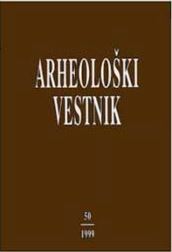Karpološke in antrakotomske analize iz prazgodovinskih višinskih naselij na Dolenjskem
Abstract
As at the most archaeological sites, seeds of various species of cereals and of its associated weeds predominate. There are also occasional finds of seeds of trees and bushes. Important is the amount of the tiny seeds of crucifers (Brassicaceae) of the genera Brassica (cabbage, rape, kohlrabi, turnip) and Sinapis (mustard). Contrary to the other European and Near Eastern archaeological sites, the numerous and regular finds of cruciferous seeds in Slovenia are greatly exceptional. Only in the northwestern parts of Europe some finds of seeds of crucifer Camelina are known. In Italy a few grains of Brassica were found in the strata of the later Neolithic, Bronze Age and Roman periods, otherwise such finds are not known (Hopf 1991). Given the regular and abundant finds of seeds of genera Brassica and Sinapis in Slovenia, it is possible to conclude that these plants had already been cultivated here and thus the provenance of the present numerous cultivated crucifers can in fact be sought in the present- day Slovenian regions.
Downloads
Downloads
Published
How to Cite
Issue
Section
License

This work is licensed under a Creative Commons Attribution-NonCommercial-ShareAlike 4.0 International License.
Authors guarantee that the work is their own original creation and does not infringe any statutory or common-law copyright or any proprietary right of any third party. In case of claims by third parties, authors commit their self to defend the interests of the publisher, and shall cover any potential costs.
More in: Submission chapter





